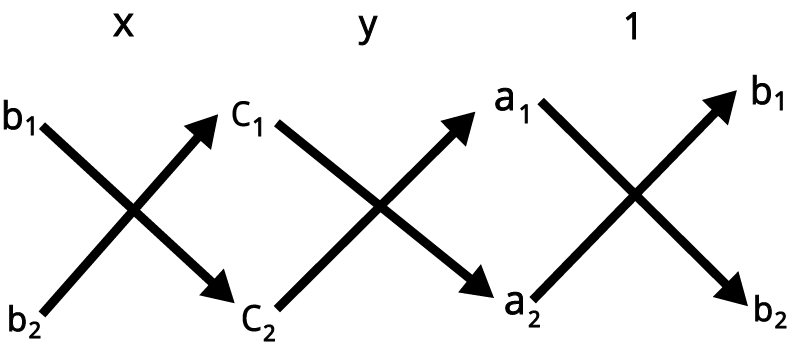Maths Notes for Chapter 3 Pair of Linear Equations in Two Variables Class 10 - FREE PDF Download
Pair of Linear Equations in Two Variables Class 10 Maths Chapter 3 CBSE Notes - 2025-26



FAQs on Pair of Linear Equations in Two Variables Class 10 Maths Chapter 3 CBSE Notes - 2025-26
1. What are the key concepts covered in Class 10 Maths Chapter 3: Pair of Linear Equations in Two Variables for quick revision?
The main concepts include the definition and general form of a linear equation in two variables, methods to solve pairs of linear equations (substitution, elimination, and cross-multiplication), and the geometrical interpretation of solutions as intersecting, coincident, or parallel lines. Students should also revise consistency and inconsistency of equations and practice classifying the solution set for different systems.
2. How can I summarise the revision flow for Pair of Linear Equations in Two Variables to revise efficiently before exams?
Start with the general form of linear equations, understand each method of solution (substitution, elimination, cross-multiplication), and then focus on interpreting graphical solutions. Finally, review solved examples and practice questions to check understanding. This flow ensures coverage from basic concepts to application, following the structure in your revision notes.
3. What are some real-life applications of linear equations in two variables I should mention in my answers?
Pair of linear equations are used in situations such as budgeting (managing income and expenses), distance-time problems, calculating costs of two items, and determining age-related problems. Mentioning practical applications shows deeper understanding and connection to real-world scenarios, as recommended in the CBSE 2025–26 syllabus.
4. Why is it important to learn different methods (substitution, elimination, cross-multiplication) for solving linear equations?
Different methods provide flexibility in solving problems based on the form and coefficients of the given equations. Some methods are simpler or quicker for certain types of problems; for example, elimination is efficient when coefficients are easily matched, while substitution is useful when a variable is already isolated. Using multiple methods helps tackle a wider range of questions and builds strong problem-solving skills.
5. How can I quickly identify the nature of solutions of a pair of linear equations while revising?
Compare the ratios of coefficients:
- If a₁/a₂ ≠ b₁/b₂, the system has a unique solution (lines intersect).
- If a₁/a₂ = b₁/b₂ = c₁/c₂, there are infinite solutions (lines are coincident).
- If a₁/a₂ = b₁/b₂ ≠ c₁/c₂, there is no solution (lines are parallel).
6. What are common errors students should avoid during last-minute revision of this chapter?
- Not writing equations in standard form before applying a method.
- Forgetting to check the nature of solutions before solving.
- Calculation mistakes during elimination or substitution steps.
- Confusing infinite solutions with no solution pairs.
7. How are graphical representations helpful in understanding linear equations in two variables during revision?
Graphical methods let you visually interpret the nature of solutions: intersection at a point (unique), overlap (infinite), or parallel (none). This aids conceptual clarity and supports MCQ and reasoning questions, aligning with CBSE’s emphasis on understanding over rote memorisation.
8. What key terms should I highlight in my revision notes for this chapter?
Highlight terms like linear equation, solution, consistency, inconsistent, substitution method, elimination method, cross-multiplication method, unique solution, infinite solutions, and no solution. Emphasising these assists with quick revision before exams.
9. If two pairs of linear equations have the same solution, what does this indicate and how should you summarise this in your notes?
This means the equations are dependent and consistent, representing the same straight line. In your summary, note that both equations have infinitely many solutions because every solution of one equation also satisfies the other.
10. What should be my revision strategy when preparing for long-answer questions in this chapter?
Practice stepwise solutions—write equations in standard form, choose the most appropriate method, clearly show algebraic steps, and check the nature of the solution. Revise model answers given in the notes and attempt mixed-type practice problems to reinforce your conceptual understanding and application skills.




















 Watch Video
Watch Video





















